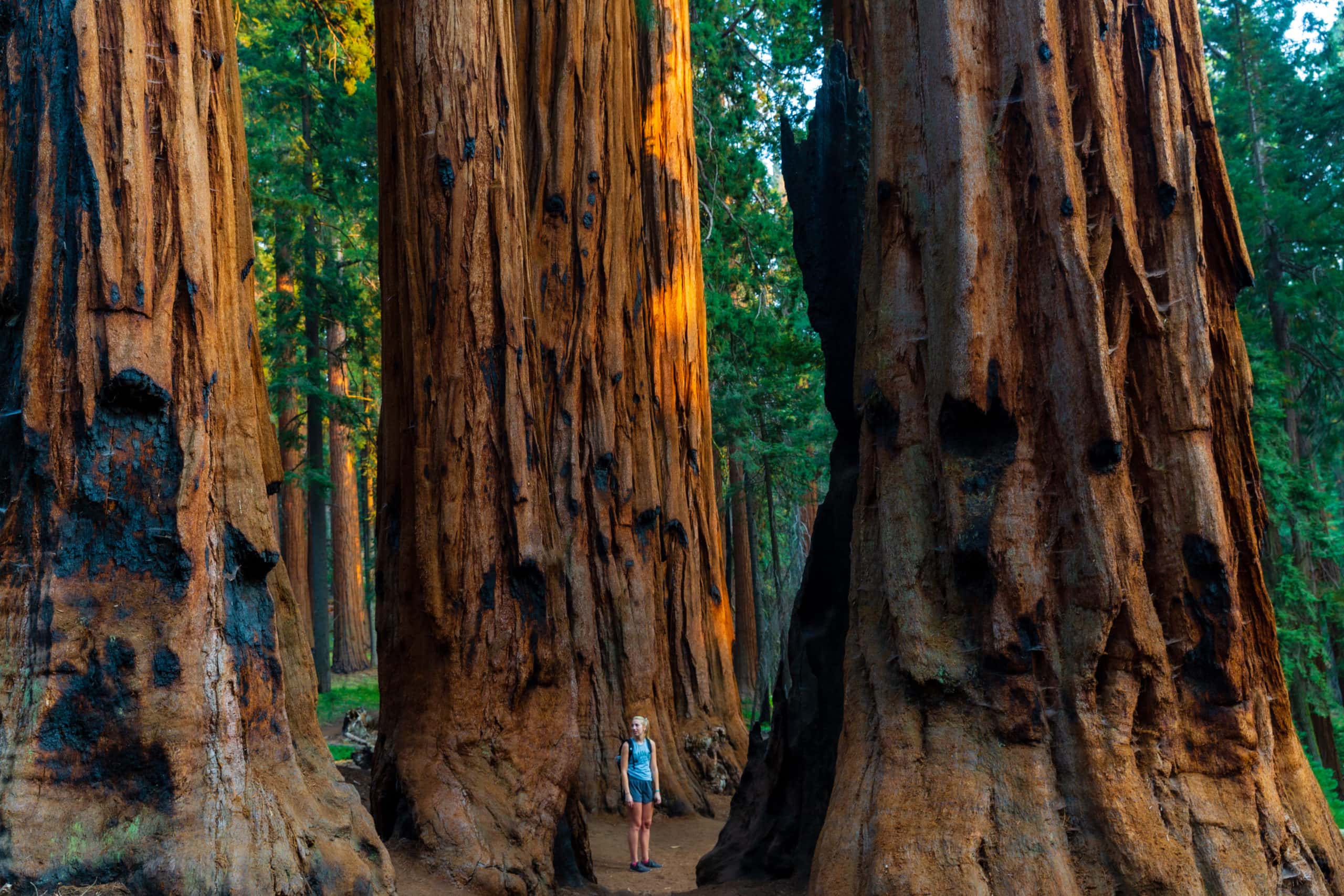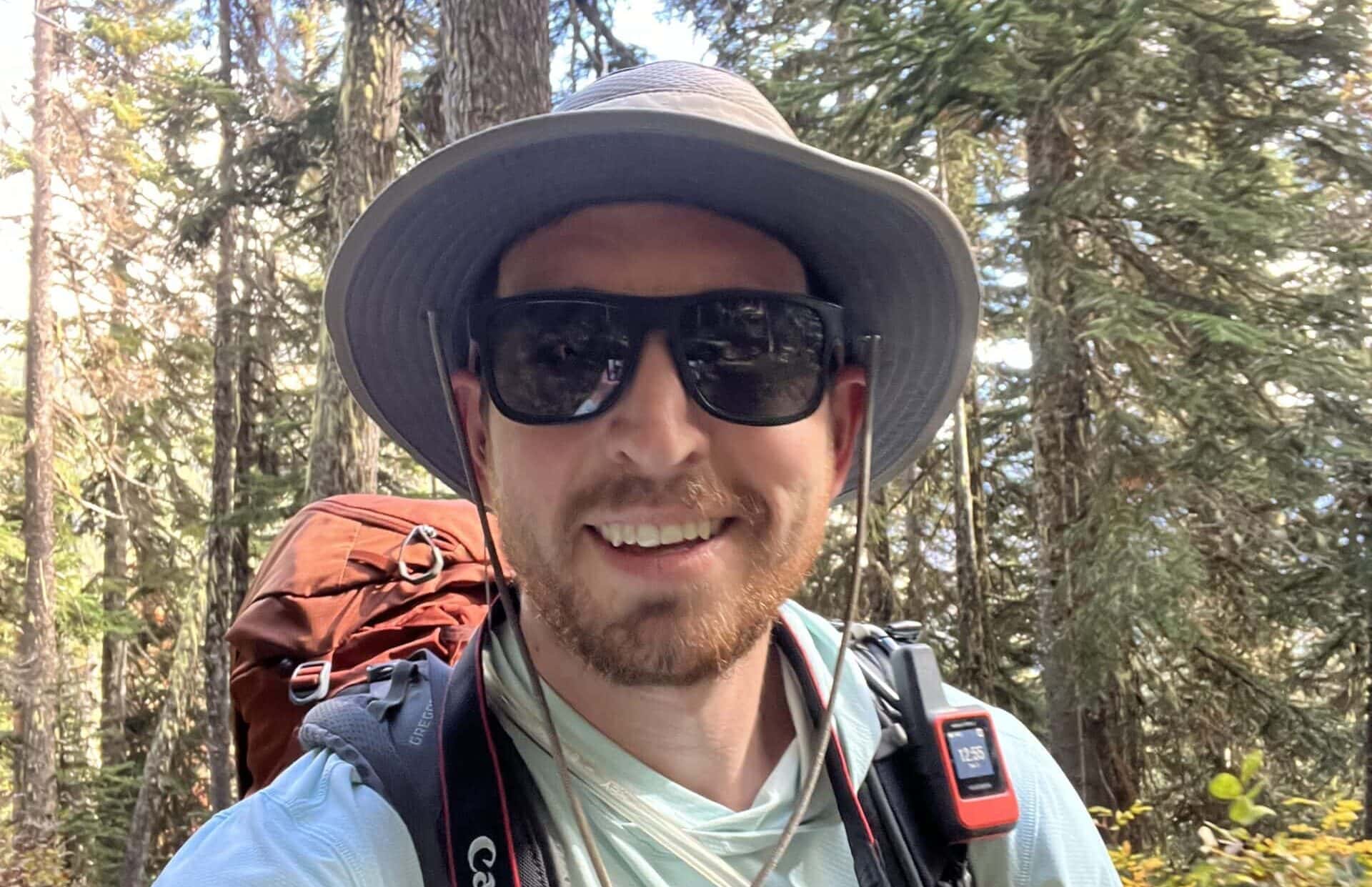Ultimate Guide to Visit the General Sherman Tree in Sequoia National Park
Being in the presence of a standard Giant Sequoia is a humbling experience I’ve treasured over the three times I’ve visited Sequoia National Park. But seeing the General Sherman Tree, the largest tree in the world by volume, is on a totally different level.
This is one of my favorite areas of Sequoia National Park, and it’s a must-see destination for anyone visiting one of the best National Parks in America.
An estimated 2,200 – 2,700 years old, the General Sherman Tree is so big that even your ultra-wide angle iPhone settings will have trouble getting it fully in frame.
Inside, I give you everything you’ll need to know about seeing the largest tree on Earth!
Why you can trust me: You can trust that this review is authentic and real because I actually went on it, and I recommend it as the best hike in the area. I try to use my blog as I’d talk to my friends, and the General Sherman Tree is one you’ll be stoked about!
A Guide to Visiting the General Sherman Tree in Sequoia National Park

We’ll dive into all you need to know to visit the largest tree on Earth, the General Sherman Tree.
General Sherman Tree Trail Stats
- Distance: 1.2 miles
- Elevation Gain: 200 feet
- Time on Trail: 75-90 minutes
- Difficulty: Moderate
Congress Trail Stats
- Distance: 3miles
- Elevation Gain:500 feet
- Time on Trail: 2-3 hours
- Difficulty: Moderate
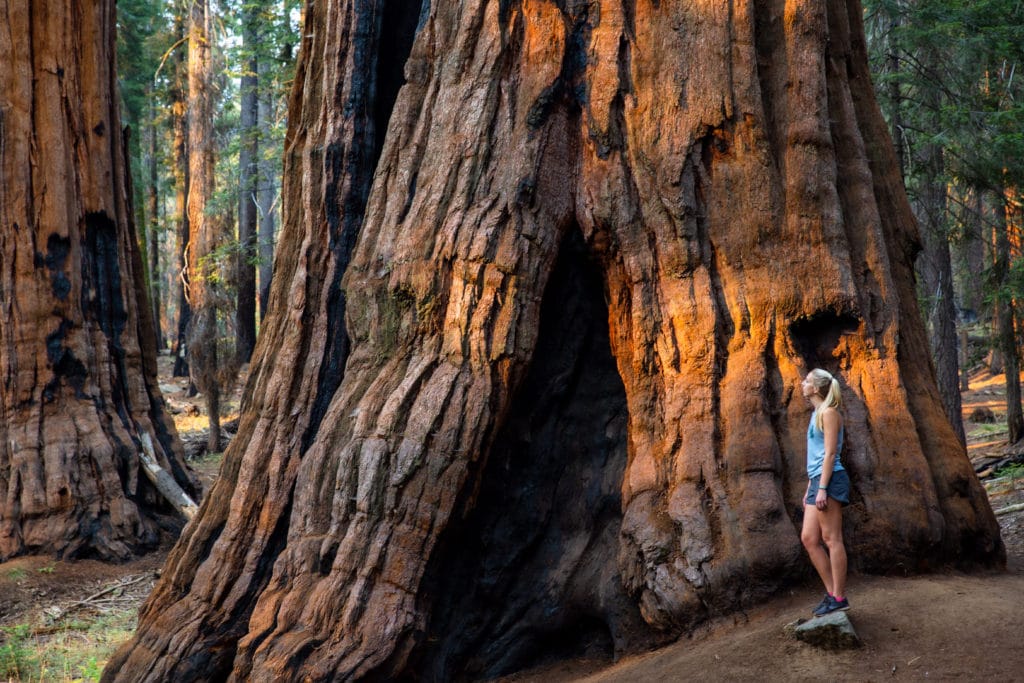
Your Guide to a Sequoia/Yosemite Six-Day road trip
Things to Know Before You Visit the General Sherman Tree
Here are some quick tidbits to make your journey better.
Where is the General Sherman Tree Located?
The General Sherman Tree is located in Sequoia National Park, about 10 minutes south of the Lodgepole Campground and Visitor Center. Unless you can park in the handicapped area, you’ll park in the General Sherman Parking Lot.
From here, it’s a 1.2-mile round-trip walk to the world’s largest tree.
How do I see the General Sherman Tree?
As mentioned above, you’ll hike 1.2 miles to the General Sherman Tree to lay eyes on the largest tree on Earth. While it is a paved path, it is somewhat steep. But the hardest part for most visitors is dealing with the elevation.
In Sequoia, you’re hiking at 7,000 feet. At this elevation, you’ll be winded much faster, and it’s imperative you take it slow if you are worried about your health.
There are plenty of benches along the way to rest and catch your breath.
Even in great shape, I would feel it in my lungs going up the two-football field length uphill section.
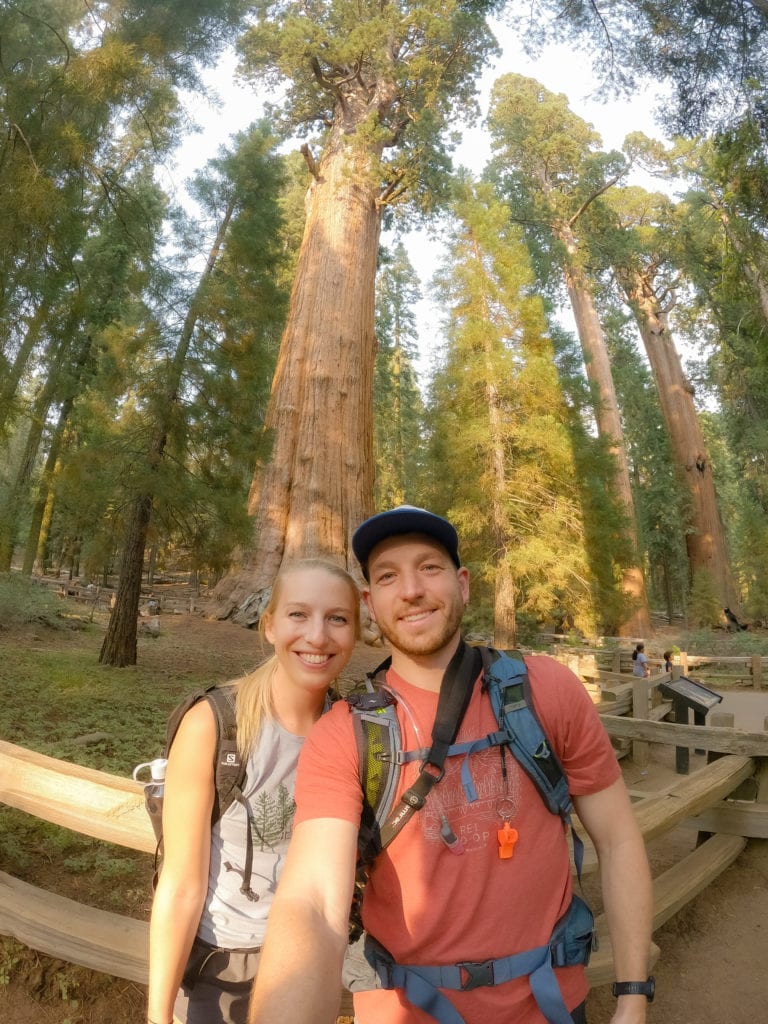

What is the best time of year to visit Sequoia National Park?
The best time to visit Sequoia National Park is during the summer months, from May – September. It’ll be chillier earlier, and some snow may be lingering. Later in the summer, it’ll be warmer, but you may have to contend with wildfire smoke.
Whenever you come, it will be delightful and one of the best experiences you’ve ever had.
Can I visit Sequoia National Park and the General Sherman Tree in the Winter?
Yes, you can visit this area in the winter. However, you must carry chains or have a 4×4 vehicle, as the roads are snowy and icy at this elevation. Also, they may close the switchbacks out of Visalia, so you must enter via Fresno/Kings Canyon.
Additionally, they open up the lower parking area to all cars during winter and close the main parking lot.
Drive time from LA and SF
It takes six hours to drive from Los Angeles and six hours to drive from the Bay Area.

Quick Facts about the Largest Tree in the World
How Big is the General Sherman Tree?
He (can we call a tree him?) is 275 feet tall and has a larger than 36-foot diameter base. *Insert head exploding action.*

When did they identify the General Sherman Tree as the largest tree on Earth?
In 1931, it was announced that it was the largest tree in the world vs. the General Grant Tree (in nearby Kings Canyon National Park).
Historically, the General Sherman Tree has not been the largest tree on Earth. Two larger trees, The Lindsey Creek Tree and Crannell Creek Giant, were larger.
However, the Lindsey Creek Tree was destroyed by a storm in 1905, while the Crannel Creek Giant was cut down in the 1940s. (It doesn’t seem like an official measurement ever occurred for this one.)
See the best hikes and how to plan your trip to Sequoia.
Hiking the Congress Trail to see the General Sherman Tree
Where is the General Sherman Tree on the trail?
After starting on the Congress Trail from the main parking lot, you’ll be walking down a paved path that drops relatively quickly in elevation. While the hike down is a breeze, coming up, it can be difficult due to the altitude.
Once at the bottom, the path will turn to dirt, and you’ll follow the signs for the General Sherman Tree. You won’t be able to miss it, considering it’s a humongous Giant Sequoia, and there will be plenty of crowds.
How long is the complete hike on the Congress Trail?
In my mind, it’s the best trail in the park.
The Congress Trail is a three-mile loop with 460 feet of elevation gain. (Most of it is at the beginning and end.) In my photography opinion, the best parts are the Senate and House Group. You can get some awe-inspiring shots, best done in the early morning or late afternoon.
While the General Sherman Tree is walled off, and you cannot go up to it, you can walk up to other Giant Sequoias and experience how massive they are. It’s an amazing experience and the reason I think it’s my favorite trail around.
There’s truly nothing like getting to feel the size of these trees from a close proximity.
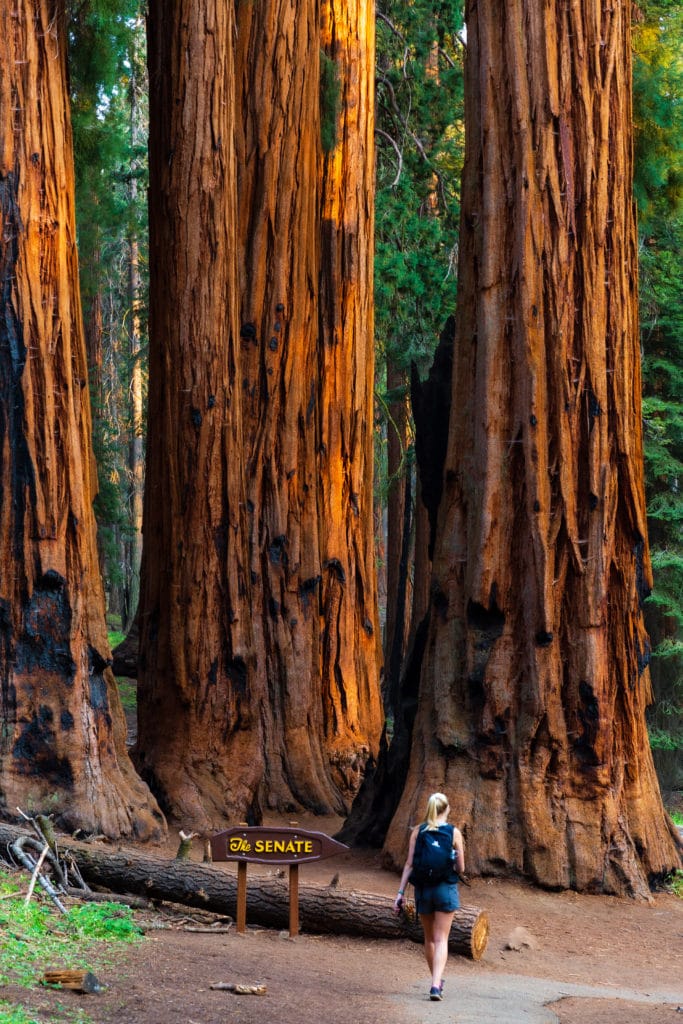
Is this the best hike in Sequoia National Park?
Discounting backpacking trails, I believe the Congress Trail + General Sherman Tree is the best hike in Sequoia. There’s so much to do and see. Plus, it’s extremely accessible and easy to reach.
At just around three miles, it won’t take up too much of your day but will give you an incredible show and really allow you to immerse yourself in the area.
You’ll love walking under these giants! (Another good one to do is Moro Rock!)
How hard is the hike to the General Sherman Tree?
The first half of the trail is all downhill, so it’ll be easy. Then it’s flat as you walk to the base. The hard part is on the way up. Overall, I would give this a moderate rating simply because you’re hiking at altitude, and for some people, the final uphill is quite challenging.
How long will the entire hike take?
If you’re only hiking to see the General Sherman Tree, I estimate it will take you 75 minutes to do the entire hike. It’s pretty short and sweet. Now, if you plan to do the entire Congress Trail, give yourself 2-3 hours, as I’m sure you will want to soak in the views and take a lot of photos!
Where should I stay when visiting Sequoia National Park?
There are only a few options to stay inside or close to the park, while plenty more are available in the valley’s cities. Your best options there are Fresno or Visalia.
I’d recommend clicking here to see the best lodging options in the area.
Hotels Options
Budget Option: Comfort Suites Visalia Or Hampton Inn Fresno
Mid-Level Option: Stony Creek Lodge
Luxury Stay: Wuksachi Lodge or John Muir Lodge
There are a handful of campgrounds in the park. I have more camping information in my full Sequoia National Park article, which you can read here.
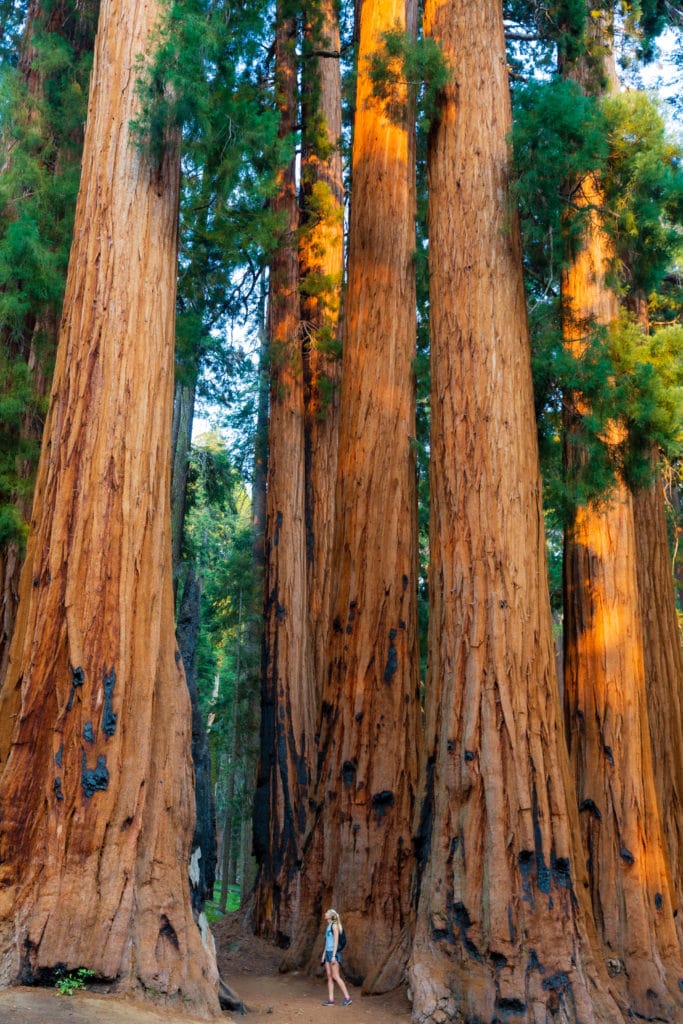
What Else Should I See?
- Drive Through Tunnel Log
- Moro Rock
- Crescent Meadows
- Hike on the High Sierra Trail
FAQs: General Sherman Tree
Can you touch the General Sherman Tree?
No, you cannot. The tree is surrounded by a wooden fence and a sign. Please adhere to the boundaries set by the National Park Service and do not approach the tree.
Is the General Sherman Tree still growing?
Remarkably, it continues to grow, annually gaining enough wood to constitute a new tree 60 feet (18 meters) tall. Furthermore, it’s also losing pieces. (It had a massive arm fall off in the last ten years.)
What is so special about the General Sherman Tree?
It is the largest tree by volume on this planet. While somewhat insignificant compared to larger social issues, it is still a pretty cool thing, and you should see it if you can! You’ll never forget it.
How do they protect Giant Sequioas like the General Sherman Tree from a fire?
Giant Sequoias have a very flame-resistant bark, which helps protect them from fires. However, as changing climates create new challenges, California’s challenge is hotter and stronger fires. Due to this, fires that didn’t kill these beautiful trees are now doing so.
Because of this, firefighters have been wrapping the Giant Sequoia with foil to protect their base from fire.

Are there restrooms at the trailhead?
Yes, there are restrooms at the main parking lot trailhead.
Will I have cell phone service?
Cell phone service is very spotty in Sequoia National Park. I would not anticipate having it as this is a remote area. I recommend downloading your maps offline and grabbing a brochure/map from the park’s visitor center.
Are there bears in Sequoia?
Yes, there are plenty of bears in Sequoia National Park. However, the odds are very low (almost zero) that you’ll see them on the Congress Trail and at the General Sherman Tree. This is so popular that bears want nothing to do with this spot.
Brief History of Sequoia National Park
Sequoia National Park, located in the Sierra Nevada Mountains of California, has a rich history intertwined with the United States conservation movement. Established on September 25, 1890, it is the second-oldest national park in the country.
Before the park’s establishment, the region was inhabited by Native American tribes, including the Yokuts and Western Mono peoples. They revered giant sequoia trees, considered them sacred, and utilized their resources for various purposes.
In the mid-19th century, explorers and settlers ventured into the area, captivated by the magnificence of the towering sequoias. Notable figures like John Muir, often called the “Father of the National Parks,” recognized the need to protect these ancient trees and their ecosystems. Galen Clark, the first guardian of Mariposa Grove, also played a significant role in advocating for preservation efforts.
Sequoia National Park was established to safeguard these natural wonders, including notable trees like General Sherman and General Grant, among Earth’s largest and oldest living organisms. The park’s boundaries have expanded to encompass a broader area of the Sierra Nevada, preserving its diverse landscapes and unique ecosystems.
In 1984, Sequoia National Park was designated as a UNESCO World Heritage site, recognizing its outstanding value to humanity and its exceptional natural features.
Final Thoughts on the General Sherman Tree in Sequoia National Park
The General Sherman Tree is an awe-inspiring natural wonder in Sequoia National Park. It stands tall at 275 feet and has a circumference of over 100 feet. This giant Sequoia has been around for thousands of years and attracts visitors from all over the world.
Its size and magnificence showcase the power and beauty of nature, reminding us that there is still so much to discover in our world.
If you’re a nature lover, visiting this incredible tree should be on your bucket list. It offers an unforgettable experience that will leave you in awe.
Until next time adventurers, take care and be safe.
The 22 best hikes in Washington
Looking for hiking watches? I have 13 I recommend.
Follow my adventures on TikTok, Facebook, and Instagram.

